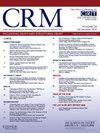Flow characteristics of reperfusion sheaths when utilizing large bore mechanical circulatory support devices
IF 1.9
Q3 CARDIAC & CARDIOVASCULAR SYSTEMS
引用次数: 0
Abstract
Background
Reperfusion sheaths are commonly utilized to prevent acute limb ischemia (ALI) when using large bore mechanical circulatory support devices, though little is known about flow characteristics of these sheaths.
Methods
The purpose of this assessment was to characterize the flow rates of various femoral to femoral (fem-fem) bypass circuits. We devised a test setup that maintains a preset input pressure for test devices to enable an accurate comparison of bypass techniques.
Results
Negligible flow rate increases were observed in active or passive ipsilateral and contralateral circuits when donor or receiver sheaths were sequentially increased in size. When using a contralateral fem-fem bypass circuit, the use of a Merit Prelude Pro 8F sheath paired with a 5F Arrow reperfusion sheath provided 167 ml/min of flow. If the reperfusion sheath was exchanged to a 6F sheath the flow rate was 169 ml/min, 175 ml/min with a 7F sheath and 179 ml/min with an 8F sheath, a total difference of 7 %. When maintaining a 6F reperfusion sheath as a constant, the use an ipsilateral fem-fem bypass circuit using an Abiomed 14F Low profile sheath provided 215 ml/min of flow, a 27 % higher flow than a contralateral 8F circuit. The use of an active pressure bypass system using an 18F ECMO cannula provided 356 ml/min, a 66 % higher flow than a 14F ipsilateral fem-fem bypass and 110 % higher flow than an 8F contralateral fem-fem bypass.
Conclusion
Flow rate through a fem-fem bypass circuit is contingent upon the smallest diameter along the pathway which is typically the side port of the sheath. There are negligible changes in flow rate based on increasing donor or receiver sheath sizes. Novel, purpose-built reperfusion sheath taking these flow characteristics into account are needed to improve such systems.
利用大口径机械循环支撑装置时再灌注护套的流动特性。
背景:当使用大口径机械循环支持装置时,再灌注鞘通常用于防止急性肢体缺血(ALI),尽管对这些鞘的流动特性知之甚少。方法:本评估的目的是表征各种股-股(fem-fem)旁路回路的流速。我们设计了一种测试装置,可以为测试设备保持预设的输入压力,以便对旁路技术进行准确的比较。结果:当供体或受体鞘依次增大时,在主动或被动的同侧和对侧回路中观察到可忽略不计的流速增加。当使用对侧fem-fem旁路电路时,使用Merit Prelude Pro 8F护套与5F Arrow再灌注护套配对,提供167 ml/min的流量。如果再灌注鞘换成6F鞘,流速为169 ml/min, 7F鞘为175 ml/min, 8F鞘为179 ml/min,总差异为7%。当维持6F再灌注护套不变时,使用Abiomed 14F低轮廓护套的同侧fem-fem旁路电路提供215 ml/min的流量,比对侧8F电路高27%的流量。使用主动压力旁路系统,使用18F ECMO套管提供356ml /min,流量比14F同侧fem-fem旁路高66%,比8F对侧fem-fem旁路高110%。结论:通过fem-fem旁路电路的流量取决于沿着通道的最小直径,通常是鞘的侧端口。在增加供体或受体鞘尺寸的基础上,流量的变化可以忽略不计。为了改善这种系统,需要考虑到这些流动特性的新型、专用的再灌注鞘。
本文章由计算机程序翻译,如有差异,请以英文原文为准。
求助全文
约1分钟内获得全文
求助全文
来源期刊

Cardiovascular Revascularization Medicine
CARDIAC & CARDIOVASCULAR SYSTEMS-
CiteScore
3.30
自引率
5.90%
发文量
687
审稿时长
36 days
期刊介绍:
Cardiovascular Revascularization Medicine (CRM) is an international and multidisciplinary journal that publishes original laboratory and clinical investigations related to revascularization therapies in cardiovascular medicine. Cardiovascular Revascularization Medicine publishes articles related to preclinical work and molecular interventions, including angiogenesis, cell therapy, pharmacological interventions, restenosis management, and prevention, including experiments conducted in human subjects, in laboratory animals, and in vitro. Specific areas of interest include percutaneous angioplasty in coronary and peripheral arteries, intervention in structural heart disease, cardiovascular surgery, etc.
 求助内容:
求助内容: 应助结果提醒方式:
应助结果提醒方式:


